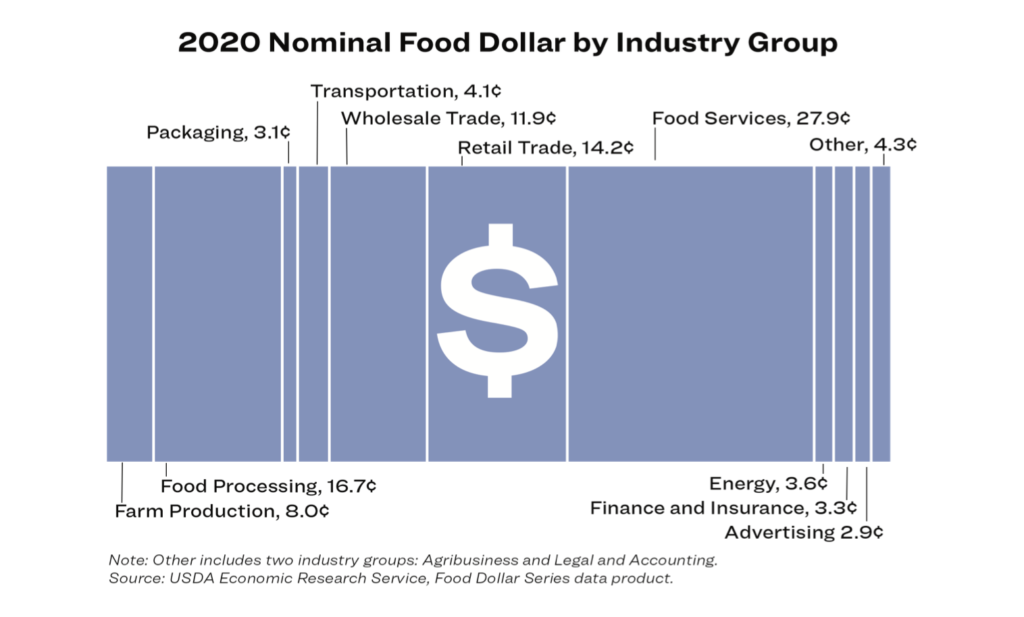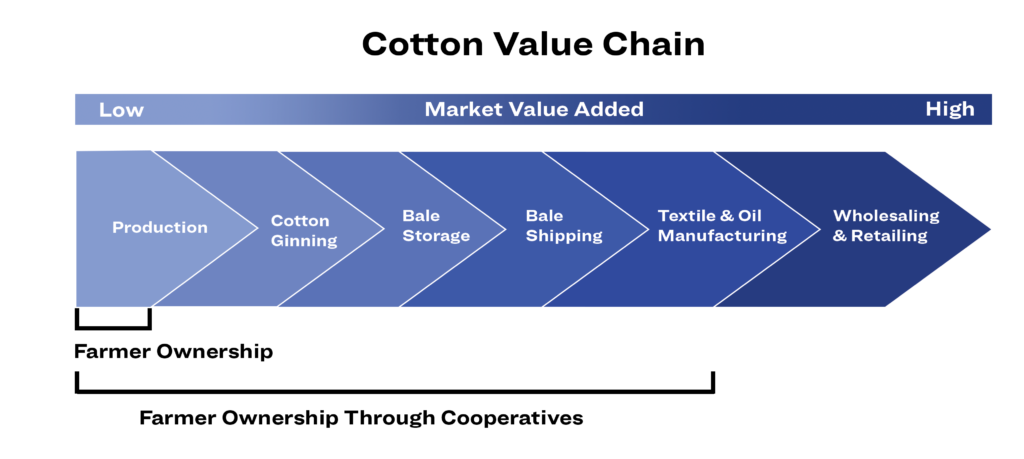by John Park, Ph. D.

The agriculture and food sectors of our national economy are impressive and admired across the world. Together, farming and its related industries (food and beverage manufacturing, food and beverage stores, food services, eating and drinking places, textiles, apparel, forestry and fishing) contributed $1.055 trillion to the U.S. gross domestic product in 2020 (USDA, Economic Research Service). Approximately 5% of GDP comes from these industries, and 0.6% of GDP from farming itself.
Gross Domestic Product, or GDP, is the total market value of all the finished goods produced in the country. Agricultural production, as an industry, contributes a seemingly small amount to GDP because much of our agricultural production is not “finished” for human consumption. We typically include the other relevant industries when reporting the significance of agriculture to our economy because they are intrinsically connected. Farming then, is at the start of an important value chain.
The agricultural value chain
Consider wheat as it leaves the farm. First, it may find its way to a grain elevator for storage. Eventually, it may be transported to a flour mill, processed into flour, and packaged into a five pound sack. This sack is sold and delivered to a grocery wholesaler, who then sells and distributes it to a grocery store in your neighborhood. You purchase that wheat and you receive satisfaction from the purchase. Economists call this satisfaction utility, and it basically has three characteristics: form, place, and time. In other words, instead of growing your own kernels of wheat, you purchased a sack of flour (form utility) at a nearby grocery store (place utility), at your convenience on a Saturday morning (time utility). It took many businesses to create that value for you, and they work pretty hard to help you see that value as an advantageous exchange for your money.
We eat our food in the form we like, at a place we like, and when we like, and we are willing to pay this marvelous value chain for that satisfaction. But as you can imagine, not all industries are paid equally. Generally speaking, for each dollar you spend on food in the U.S., you pay 27.9¢ for food services, 16.7¢ for food processing, 14.2¢ for retailing, 11.9¢ for wholesaling, 8.0¢ for farm production, and 21.3¢ for a variety of other activities. At first, it may not appear fair that farmers, who actually grow food, only receive 8¢ from each dollar spent on food, but we have to recognize the value we receive from a meal at your favorite restaurant, a pizza delivered to your door, or from having food products stored in your pantry. But just because farm production adds less to the final food dollar doesn’t meant that farmers can’t capture more profit from the value chain. Through cooperative ownership, farmers are able to share in the profits generated by commodity storage and processing, food manufacturing, retailing, and other market activities.
Ownership through cooperation
For example, a cotton farmer might participate as a member-owner of her local cooperative cotton gin. Her bales might be sent to a cooperative compress for storage. Her cooperative gin might send seed from her bales to a cooperative oil mill for further processing. Furthermore, bales are sold on electronic marketplaces, cotton is spun into yarn and milled into textiles, and cottonseed oil can be manufactured into cooking oil. All these activities can be performed by cooperatives. Our cotton farmer then owns more of the system than just farm production. Through cooperative ownership, she participates in generating and receiving profits from other parts of the value chain.
This is important because one of the greatest challenges to farm profitability is that consumers don’t buy cotton lint or cottonseed. They buy cotton in the form of t-shirts, blue jeans, and athletic wear. They buy cottonseed in the form of cooking oil and potato chips and other prepared foods. If you compare the price per pound of cotton lint received by a farmer to the price of a shirt or a pair of blue jeans, it is clear that there is a lot of economic value added to cotton beyond the farm. Limited to their farm production, farmers would be unable to capture value from this chain of economic activity. Through cooperatives, however, farmers are able to own the firms that create additional value and reap a portion of the profits.
In that sense, you might consider that a farmer’s participation in cooperatives represents an investment in the infrastructure of our agricultural marketing system. Without this investment, would these market services and products be provided? Probably, but not in all market locations, and not under all market conditions. When these assets are cooperatively owned by farmers, there is a greater likelihood that services will be available in a bad crop year, and that profits will be shared in a good crop year. In short, cooperatives help farmers to manage the pressures that diminish profitability and bring greater prosperity to farms and communities.
What about consumers?
Consumers in the U.S. spend about 10% of their disposable income on food (the least of any country). Clearly, farmer ownership provides stability and efficiency to the agricultural and food sectors of our economy. We all benefit as a result.



